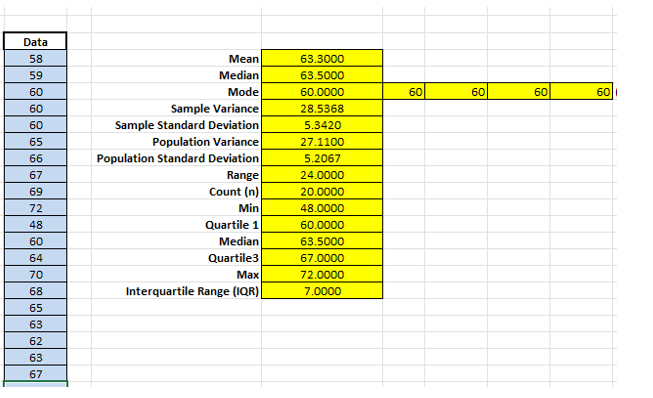Question
Find these articles in the Chamberlain Library. Once you click each link, you will be logged into the Library and then click on PDF Full
Find these articles in the Chamberlain Library. Once you click each link, you will be logged into the Library and then click on "PDF Full Text".
Article 1:
To draw conclusions about a study population, researchers use samples that they assume truly represent the population. The confidence interval (CI) is among the most reliable indicators of the soundness of their assumption. A CI is the range of values within which the population value being studied is believed to fall. CIs are reported in the results section of published research and are often calculated either for mean or proportion data (calculation details are beyond the scope of this article). A 95% CI, which is the most common level used (others are 90% and 99%), means that if researchers were to sample numerous times from the same population and calculate a range of estimates for these samples, 95% of the intervals within the lower and upper limits of this range will include the population value. To illustrate the 95% CI of a mean value, say that a sample of patients with hypertension has a mean blood pressure of 120 mmHg and that the 95% CI for this mean was calculated to range from 110 to 130 mmHg. This might be reported as: mean 120 mmHg, 95% CI 110-130 mmHg. It indicates that if other samples from the same population of patients were generated and intervals for the mean blood pressure of these samples were estimated, 95% of the intervals between the lower limit of 110 mmHg and the upper limit of 130 mmHg would include the true mean blood pressure of the population. Notice that the width of the CI range is a very important indicator of how reliably the sample value represents the population in question. If the CI is narrow, as it is in our example of 110-130 mmHg, then the upper and lower limits of the CI will be very close to the mean value of the sample. This sample mean value is probably a more reliable estimate of the true mean value of the population than a sample mean value with a wider CI of, for example, 110-210 mmHg. With such a wide CI, the population mean could be as high as 210 mmHg, which is far from the sample mean of 120 mmHg. In fact, a very wide CI in a study should be a red flag: it indicates that more data should have been collected before any serious conclusions were drawn about the population. Remember, the narrower the CI, the more likely it is that the sample value represents the population value. N
Article:2
Part 1, which appeared in the February 2012 issue, introduced the concept of confidence intervals (CIs) for mean values. This article explains how to compare the CIs of two mean scores to draw a conclusion about whether or not they are statistically different. Two mean scores are said to be statistically different if their respective CIs do not overlap. Overlap of the CIs suggests that the scores may represent the same "true" population value; in other words, the true difference in the mean scores may be equivalent to zero. Some researchers choose to provide the CI for the difference of two mean scores instead of providing a separate CI for each of the mean scores. In that case, the difference in the mean scores is said to be statistically significant if its CI does not include zero (e.g., if the lower limit is 10 and the upper limit is 30). If the CI includes zero (e.g., if the lower limit is -10 and the upper limit is 30), we conclude that the observed difference is not statistically significant. To illustrate this point, let's say that we want to compare the mean blood pressure (BP) of exercising and sedentary patients. The mean BP is 120 mmHg (95% CI 110-130 mmHg) for the exercising group and 140 mmHg (95% CI 120-160 mmHg) for the non-exercising group. We notice that the mean BP values of the two groups differ by 20 mmHg, and we want to determine whether this difference is statistically significant. Notice that the range of values between 120 and 130 mmHg falls within the CIs for both groups (i.e., the CIs overlap). Thus, we conclude that the 20 mmHg difference between the mean BP values is not statistically significant. Now, say that the mean BP is 120 mmHg (95% CI 110-130 mmHg) for the exercising group and 140 mmHg (95% CI 136-144 mmHg) for the sedentary group. In this case, the two CIs do not overlap: none of the values within the first CI fall within the range of values of the second CI. Thus, we conclude that the mean BP difference of 20 mmHg is statistically significant. Remember, we can use either the CIs of two mean scores or the CI of their difference to draw conclusions about whether or not the observed difference between the scores is statistically significant.
Step 2: Consider the use of confidence intervals in health sciences with these articles as inspiration and insights.
Step 3: Using the data you collected for the Week 5 Lab (heights of 10 different people that you work withplusthe 10 heights provided by your instructor), discuss your method of collection for the values that you are using in your study (systematic, convenience, cluster, stratified, simple random). What are some faults with this type of data collection? What other types of data collection could you have used, and how might this have affected your study?

Step by Step Solution
There are 3 Steps involved in it
Step: 1

Get Instant Access to Expert-Tailored Solutions
See step-by-step solutions with expert insights and AI powered tools for academic success
Step: 2

Step: 3

Ace Your Homework with AI
Get the answers you need in no time with our AI-driven, step-by-step assistance
Get Started


